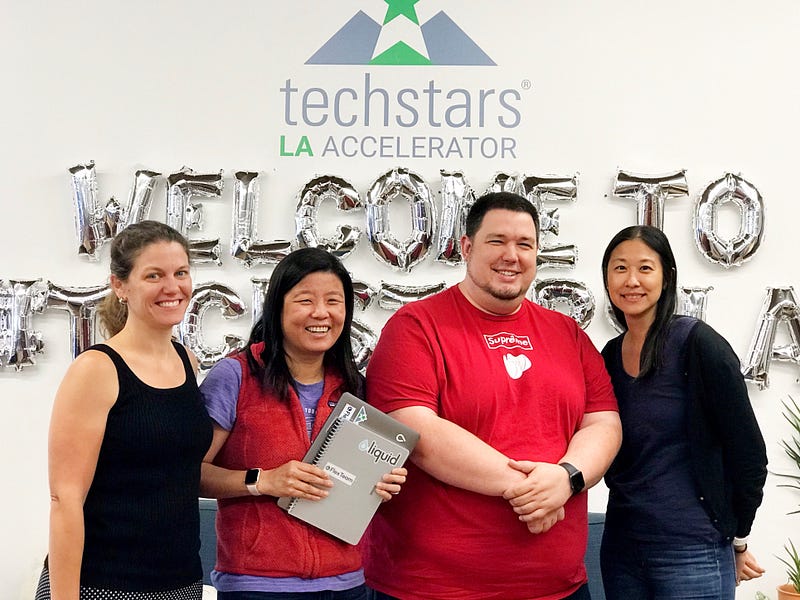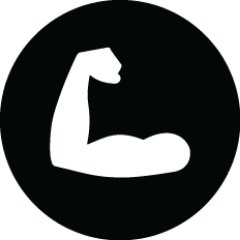In the age of AI, many say that coding is a dying art. But I think it’s more essential than ever.
Ever since ChatGPT was launched in November 2022, it has upended how we work, think, and even play. Generative artificial intelligence (AI), based on large language models (LLMs), have made huge improvements since then. Multi-modal AI — which can process info from multiple modalities such as images, video, text, and audio — makes some time consuming and tedious tasks seem effortless.
With generative AI, anyone can complete computer programming coding projects. I’ve had many non-coder friends tell me that AI has helped them build their first website, app, or other coding project. For that reason, people keep asking if learning to code has become obsolete.
I believe learning to code remains highly relevant.
Here are 13 reasons why:
1. Fundamental understanding
Learning to code is like getting a backstage pass to technology. When you understand code, you get to see how everything works behind the scenes. Coding helps people understand the fundamental concepts and principles behind how software and technology work. This understanding allows people to use AI in more powerful ways and helps to interpret AI-generated results.
2. Problem-solving skills
Coding teaches students how to break down complex problems into smaller, manageable parts and develop step-by-step solutions. These problem-solving skills help people solve problems of all types. Want to solve climate change, the problem-solving skills learned with coding will help you ideate more effective solutions. These skills are valuable in many areas of life and work, regardless of whether the actual coding is done by AI or not.
3. Logical thinking
Programming necessitates a structured approach, where every line of code builds upon the previous one, akin to constructing a building’s foundation before adding floors. This process fosters logical thinking, where individuals learn to anticipate potential outcomes, identify patterns, and discern cause-and-effect relationships. Such skills extend beyond coding, enabling individuals to dissect complex real-world problems and devise systematic solutions. Whether troubleshooting a malfunctioning device or strategizing in business, the ability to think logically is indispensable.
4. Learning to experiment
Learning to code encourages students to embrace experimentation and take risks. Through coding, students can quickly prototype and test their ideas, learning from their failures and iterating on their designs. This process of experimentation fosters creativity and innovation, enabling students to develop unique solutions that push the boundaries of what’s known and possible.
5. Collaboration with AI
As AI becomes more prevalent in programming and software development, people who know how to code can better collaborate with and guide AI systems. Programmers will need to guide AI by providing context, defining requirements, and validating its generated code (debugging). As a result, educators will need to emphasize problem decomposition, testing, and debugging – skills that are important in collaborating with AI for coding.
AI is great for data analysis and repetitive tasks, but it lacks human intuition and understanding. Conversely, programmers bring these strengths to the table, ensuring the relevance, accuracy, and ethical considerations of AI-driven solutions. When we work together with AI, we maximize the potential of both and create more robust and nuanced outcomes. However, students need to be taught to be skeptical of AI-generated results and take ownership of verifying and validating them. If students become over reliant on AI, they’ll short-circuit the important learning process.
AI-generated code can provide a starting point, but it often needs human intervention for refinement. Programmers can evaluate the code, identify areas for improvement, fix errors, and tailor solutions to specific needs. This critical evaluation is essential, especially as technology and user requirements evolve.
6. Computational thinking
Moreover, learning to code develops computational thinking, a fundamental set of skills and thought processes essential for solving complex problems across various disciplines. Computational thinking encompasses problem-solving skills, logical thinking, and other key components such as decomposition, pattern recognition, abstraction, and evaluation. By learning to code, students develop the ability to break down complex problems into smaller, manageable parts (decomposition), identify patterns and similarities within and across problems (pattern recognition), focus on the essential features of a problem while ignoring irrelevant details (abstraction), and assess the effectiveness and efficiency of their solutions (evaluation).
These skills are invaluable in navigating an increasingly complex and technology-driven world, even as AI advances and automates certain aspects of programming.
7. Foundation for systems thinking
Learning to code also provides a strong foundation for systems thinking, which involves understanding how different components of a system interact and influence each other. Coding exercises, such as debugging and optimizing algorithms, help students anticipate unintended consequences and develop strategies for building more resilient and adaptable systems. By breaking down complex problems into manageable components, identifying patterns and relationships, and understanding the interconnectedness of different elements within a system, students develop a systems thinking mindset that is transferable across many domains, from software development to business management, public policy, and beyond.
8. Emerging technologies
Coding skills are not only relevant to AI but also to other emerging technologies such as AR, (augmented reality), VR (virtual reality), and MR (mixed reality). As these spatial computing technologies continue to advance and gain popularity, there will be an increasing demand for programmers and developers who can create immersive and interactive experiences. Students with coding skills will be well-positioned to contribute to the development of AR, VR, and MR applications, which have the potential to revolutionize various industries, including education, entertainment, healthcare, and more.
9. Data science and analysis
Coding skills are essential for data science and analysis, which play a critical role in today’s data-driven world. Every two days, we create as much data as was created since the dawn of humanity through 2003. That statistic alone should tell you that data science and data literacy are crucial skills. As organizations collect and process vast amounts of data, there is a growing need for professionals who can write code to clean, analyze, and derive insights from complex datasets. Those with coding skills can leverage powerful libraries and frameworks to manipulate and visualize data, build predictive models, and support data-driven decision-making. These skills are invaluable across all industries and functions, including business, retail, healthcare, entertainment, finance, and scientific research.
10. Responsible AI development
As AI-generated code becomes more advanced and widely used, it is crucial for people to understand the code they are working with to prevent unintended consequences. AI systems can sometimes “hallucinate,” generating code that seems plausible but may contain errors, vulnerabilities, or even malicious elements. Without a solid understanding of coding principles and best practices, people may inadvertently release software that is prone to hacks or behaves in unexpected ways. By learning to code, students can develop the skills necessary to critically evaluate AI-generated code, identify potential issues, and ensure the development of safe, secure, and ethical software.
11. Critical thinking skills
Learning to code teaches critical thinking in a different way than writing does. While both coding and writing require logical thinking and problem-solving skills, coding demands a more systematic, step-by-step approach to breaking down complex problems into smaller, manageable parts. Coding also requires students to anticipate and handle potential errors or edge cases, fostering a more rigorous and detail-oriented form of critical thinking. Moreover, coding encourages students to think algorithmically and develop efficient, optimized solutions to problems. These unique critical thinking skills are invaluable not only in programming but also in a wide range of fields and everyday life situations.
12. Tackling complex global challenges
As we’ve established, learning to code equips students with computational thinking and systems thinking skills. These mindsets and skills are necessary to tackle the world’s most pressing problems. Trying to solve climate change? Tackling the impending water insecurity? Solving the problem of responsible AI implementation? All of the world’s most complex challenges require individuals who can break down problems, identify patterns, and develop innovative solutions. Coding provides a foundation for understanding and leveraging technology to address these challenges, enabling students to become active contributors to a better future.
13. Career opportunities
Even with AI improving rapidly, demand for programmers and software developers is still high. Having coding skills opens up a wide range of career opportunities and allows students to be active participants in shaping the future of technology.
While AI can automate certain aspects of programming and coding, it does not eliminate the need to learn these skills. Coding provides a foundation for understanding technology, develops valuable problem-solving and logical thinking skills, enables collaboration with AI, and opens up career opportunities.
When the printing press was invented, scribes were not rendered obsolete but adapted to new roles as typographers and printers. The invention of the camera did not eliminate the need for artists but rather opened up new artistic possibilities and genres, such as photography and film. The introduction of the typewriter did not replace the need for writers but instead changed the way they worked and made the writing process more efficient.
The advent of calculators and computers did not eliminate the need for mathematicians but rather allowed them to tackle more complex problems and develop new mathematical theories. When spreadsheets became commonplace, people theorized that accountants would become irrelevant but accountants simply shifted their work to other areas. The development of computer-aided design (CAD) software did not replace the need for architects and engineers but rather enhanced their ability to design and model complex structures.
When AI started being used in radiology, people theorized that radiologists would no longer be needed — but instead of becoming obsolete, there is now a shortage of radiologists. In all of these cases, technologies changed how humans worked but did not eliminate the need for those functions.
Similarly, rather than replacing the need for human coders, AI is likely to change the nature of programming work, requiring programmers to have coding skills and the ability to work effectively with AI tools.
Preparing for the future
In a world where AI can write essays, create art, and even compose music, it’s fair to wonder if learning to code is still worth it. But as I’ve discussed above, learning to code is absolutely still a worthwhile endeavor. Lest you think I’m not practicing what I preach, I’m actively learning Python for technical AI coding projects.
As educators, we should integrate coding into our curriculum to prepare students for the future — less for the sake of coding and more for the mindset and frameworks that learning to code develops. This includes emphasizing problem decomposition, testing, debugging, and using AI as a copilot. In many ways, how AI is changing how we teach coding is the same as how AI is changing how we teach anything. We must move from teaching basic skills (in this case, syntax) to higher-order thinking.
Students, embrace the challenge of learning to code, learn to be comfortable being uncomfortable, and don’t be afraid to make mistakes.
And to anyone reading this, recognize the importance of coding skills in today’s digital world and take steps to learn — and you’ll develop new ways of thinking that will help you become better problem solvers.
Together, we can foster a generation of creative, critical thinkers who are equipped to navigate and shape the future.

Yolanda Lau is an experienced entrepreneurship consultant, advisor, and Forbes Contributor. She is also an educator, speaker, writer, and non-profit fundraiser.
Since 2010, she has been focused on preparing knowledge workers, educators, and students for the future of work.
Learn more about Yolanda here.
Yolanda is also a Founding Board Member of the Hawai’i Center for AI (HCAI), a non-profit organization. HCAI envisions a future in which all of Hawaiʻi’s residents have access to AI technology that effectively and safely serves their individual and collective well-being. Hawai’i Center for AI promotes the beneficial use of AI to empower individuals, communities, and industries throughout Hawai’i. We are committed to understanding the ways AI will help grow the state’s economy, help our institutions evolve, and transform our society. Through collaboration, education, and service, we drive research, innovation, and community partnerships to build a sustainable, prosperous, and policy-driven future for Hawai’i.













